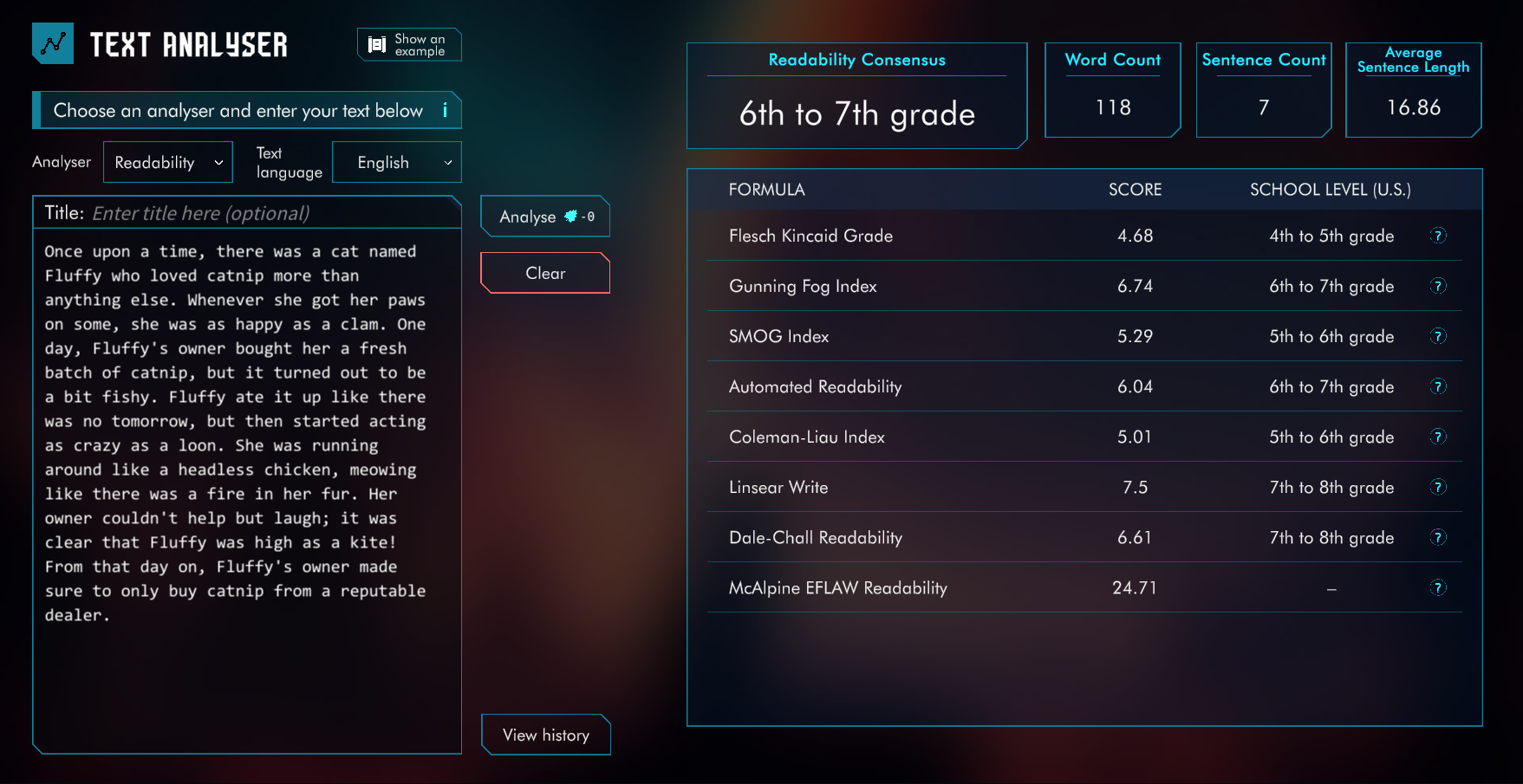Readability Checker
What is Readability?
Readability is simply how easy it is to understand a piece of writing. It shows us whether a text is easy or hard to read for its intended audience.
Cathoven's Free Readability Tool
Think of our readability score checker as a friendly guide. It helps users find out how readable a text is. It uses special formulas to give a score, showing if a text is just right, too hard, or too easy for the intended readers. The checker is like a GPS for writers, pointing out if a text needs to be made more reader-friendly.
AND it’s free forever!
Try with your own text right now (simple version)
Number of remaining chances: 3
The Readability of your text:
Formula:
Score
Grade (U.S.)
Breaking Down Readability Formulas
Flesch-Kincaid Grade Level
Linsear Write
SMOG
Dale-Chall
Automated Readability Index (ARI)
Coleman-Liau Index
Gunning Fog Index
McAlpine EFLAW
Our Unique Readability Consensus Score
Our readability checker offers something unique – the “readability consensus” score. It’s like getting a
second, third, and even fourth opinion all at once. It combines multiple readability scores, giving you a
more comprehensive view of how accessible a text is. This consensus score provides a richer understanding of
a text’s readability, helping writers make their work more clear and enjoyable for readers.

